Equipment
This is Your (Well Our) Camera at Burning Man
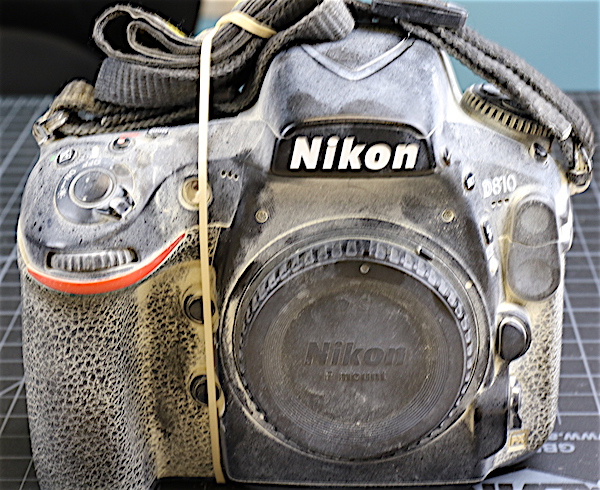
Lensrentals.com, 2016
In the repair department, there are things we hate. Salt water for cameras and lenses, salt water and sand for tripods and lenses. Sand in legs of the zoom mechanism of lenses ruins threads, they’ll never be smooth again.
Right behind those two is dust. Dust doesn’t always destroy equipment, but dust in equipment ruins pictures and can ruin circuit boards. So we hate Burning Man. The fine alkali dust that gets in everything at Burning Man isn’t as bad as sand and salt water – but it’s up there. Every year we tell people to take cheap or disposable equipment to Burning Man. It’s probably going to be ruined, and you aren’t going to like the charges. And every year people say, “It’s just dust.”
Side note for future renters. If you don’t want to take your own equipment into an area where you know it will be ruined, don’t rent our equipment and assume the Lenscap policy will cover you. It does not cover gross negligence, reckless, or intentional damage. Lenscap is designed as coverage for any accidents you may encounter, not as a way to avoid having to take common sense precautions when using our equipment in inhospitable conditions.
Since we’ve been doing a lot of Burning Man cleanup, we thought we’d share what a typical item goes through. Maybe some of you will pick up some cleaning pointers. Others may get some logical respect for dust. And some others will enjoy a peak inside the Nikon D810 that is the subject of this little post. I’ll warn you on the front end: this isn’t a teardown with great pictures. These are quick captures while we were working so there may be some motion blur and bad lighting.
So here’s a couple of views of our weary traveler as we received it.

Lensrentals.com, 2016
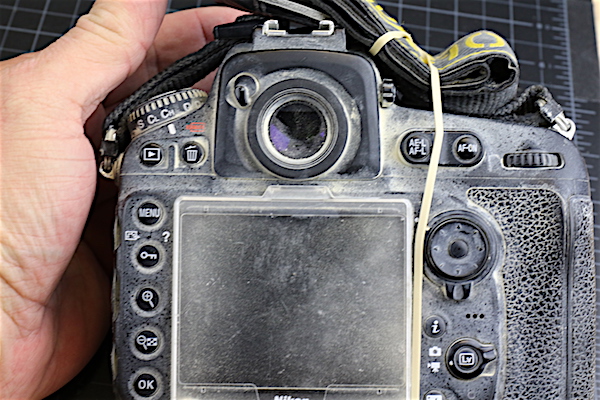
The viewfinder cups are removed. There was a lot of dust under them and while you can’t tell here, inside the viewfinder. Lensrentals.com, 2016
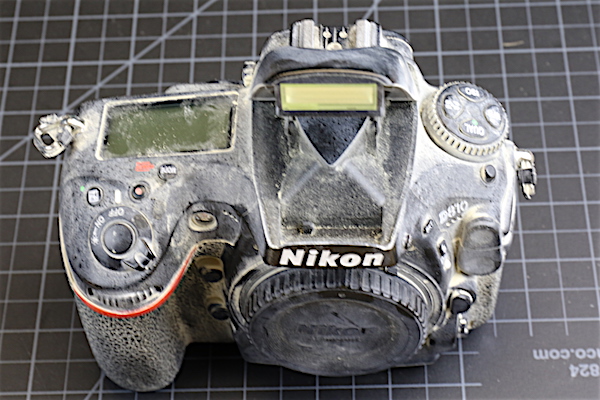
This is a poor shot, but the flash is open here, showing how much dust got into the flash tray. Lensrentals.com, 2016
Before we did anything else, particularly opening the port covers, we spent 15 minutes blowing and brushing the easily removed dust off. Pardon the blur, but it gives you a general idea of what’s left.
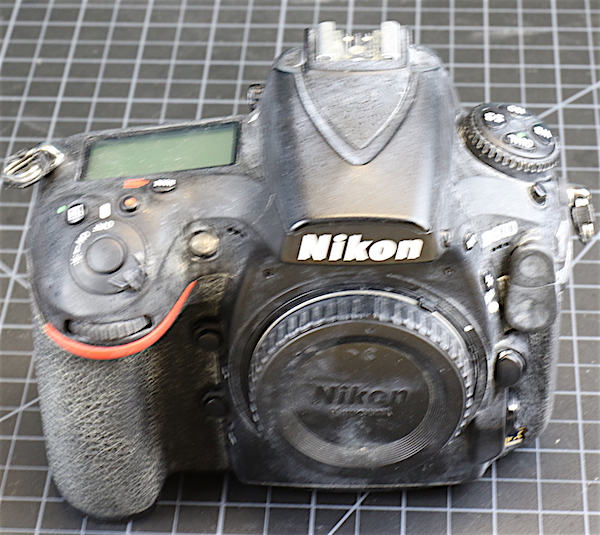
Lensrentals.com, 2016
It’s not looking great yet; that’s for sure. But we felt like we could open the ports and look at the connections. There’s still lots of caked on dust, but it’s not loose enough to fall into things. We could have used some wet cloths and things at this point and gotten off some more dust, but we didn’t want to add moisture to the equation yet.
I’m not saying that’s not an entirely acceptable option, but our primary goal at this point will be getting dust out of the inside and for that we wanted things as dry as possible.
The battery compartment, memory card slots, and the area around all the I/O ports had plenty of dust inside, so we knew further disassembly would be required.
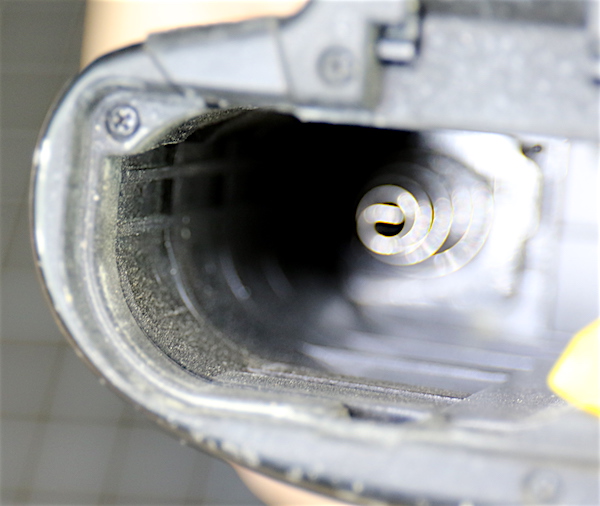
Lensrentals.com, 2016
We have kind of a love-hate relationship with disassembling Nikon cameras. The good part is they are very logically laid out and assembled, with each panel coming off by itself which makes disassembly a joy. The bad part is Nikon has a policy of using as many different sized screws as is humanly possible, making it necessary to keep incredibly organized.
For example, there are nine screws of 5 different sizes holding on the bottom plate. This may be because they’ve carefully engineered the best possible screw at each location to provide the most strength. It may just be because they hate us. I’ll never know.
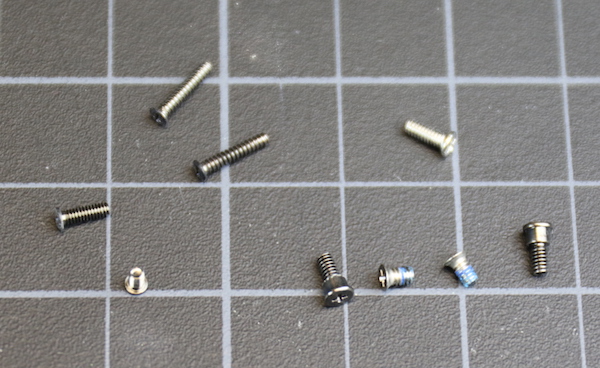
Lensrentals.com, 2016
As each panel was removed, we saw the same thing; the rubber weather resistant seals stopped the majority of the dust. In most of the pictures below you can see beige areas along the rubber seals that are caked dust. Beyond the seals, inside the camera, there are loose dust particles that got through, but the vast majority was kept out.
Overall, I’m impressed with how much dust did NOT get inside the camera. But there was still way more inside than was acceptable. One thing I should note is around every port and opening there was more dust close, and less dust further away from the opening. If there had been relatively even distribution, we might consider that it all came in through the mirror box or viewfinder or something. But I’m comfortable some dust got in from every possible access.
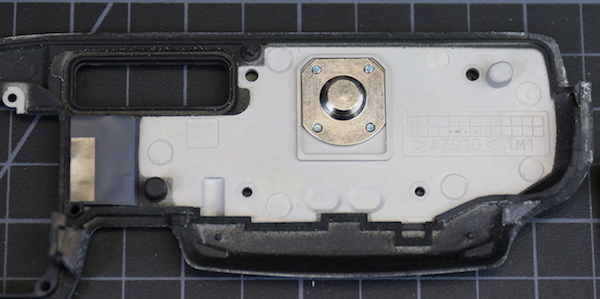
Lensrentals.com, 2016
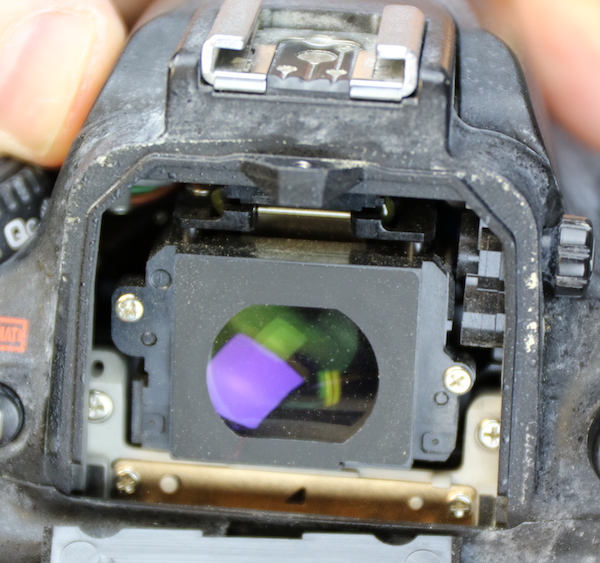
Lensrentals.com, 2016
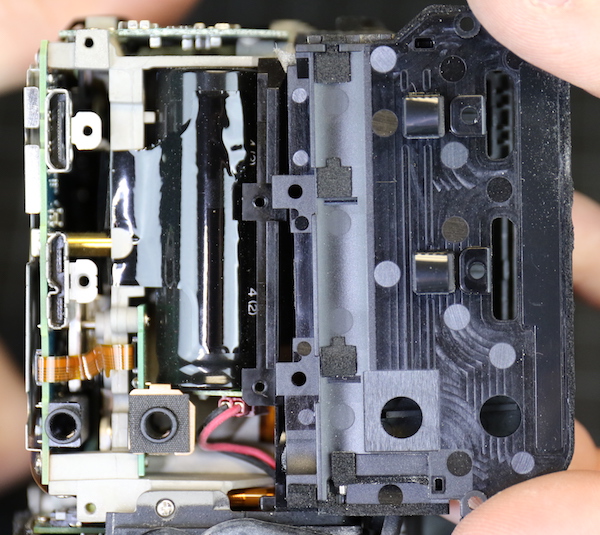
Lensrentals.com, 2016
It doesn’t show well in pictures of this size, but while there was a little dust on the PCBs underneath all those covers, it wasn’t an enormous amount. We blew it off, of course, but it wasn’t bad. Each of the plates and seals that we removed were cleaned inside and out after removal.
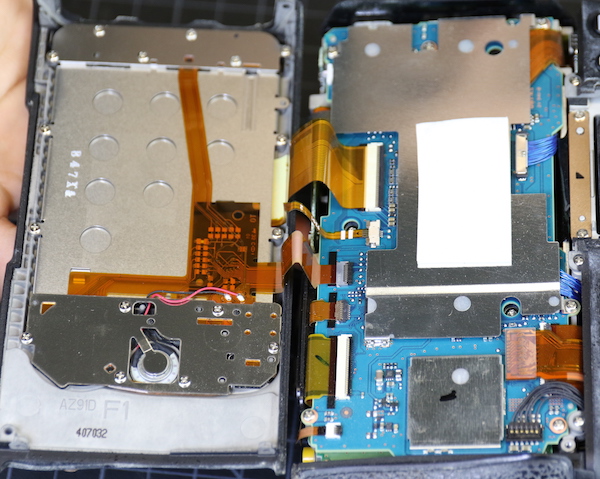
Lensrentals.com, 2016

Lensrentals.com, 2016
Here are a couple of crops from the main PCB and internal back cover to give you an idea of what I describe as ‘light dust’ inside. It’s more than acceptable but probably wouldn’t cause any damage.
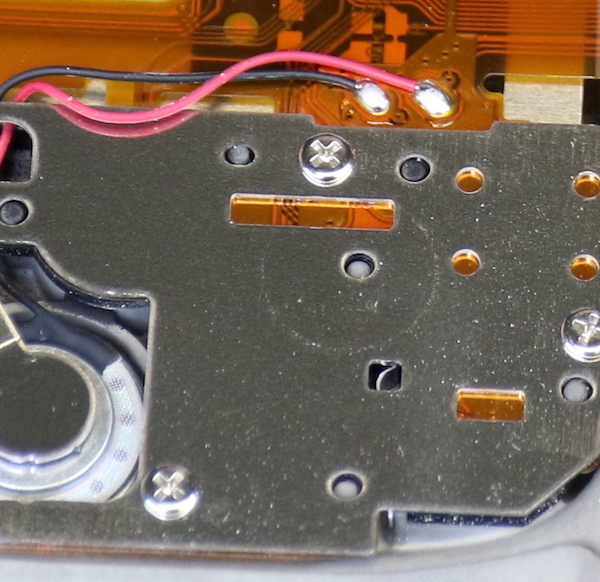
Lensrentals.com, 2016
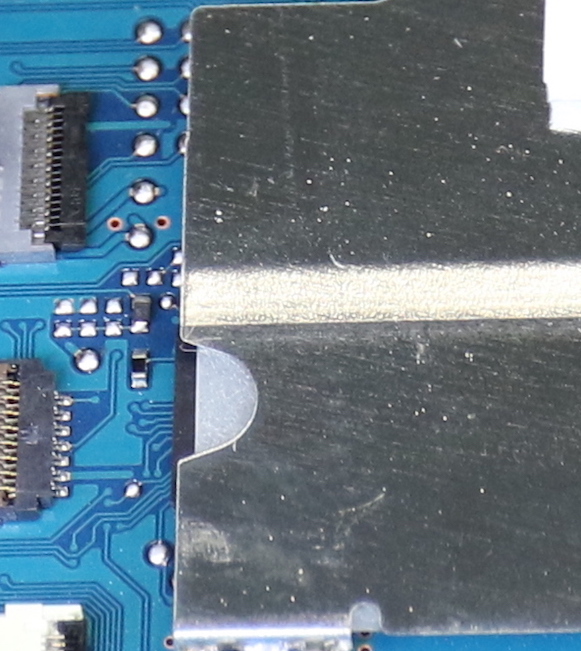
Lensrentals.com, 2016
I haven’t mentioned it, but all of the rubber grip material was removed, too. There was no way to try to clean it well in place. At this point were pretty happy with what we’d seen. There was a lot of dust in the viewfinder assembly, but not too much had gotten into the rest of the camera. We were expecting worse, though. When you see this kind of dust under the lens cap…
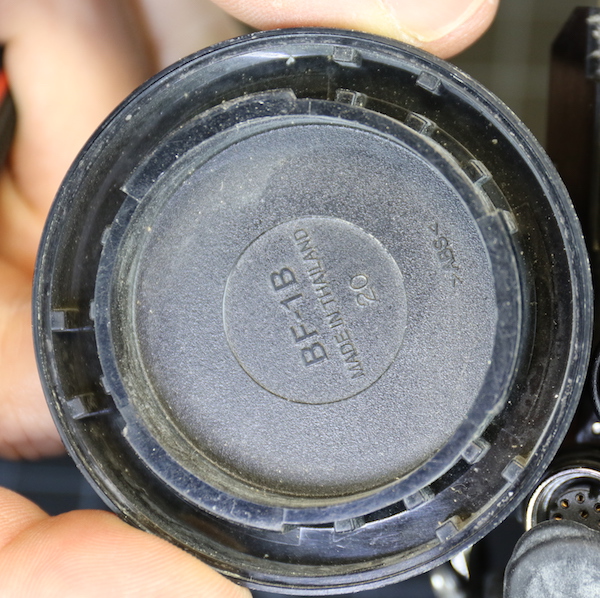
Lensrentals.com, 2016
…and in the mirror box, you figure the front of the camera is going to be worse than the back.

Lensrentals.com, 2016
That makes sense since it’s the most exposed. It’s also the bigger problem since it’s in the optical path. On to the quick picture, just to thank Nikon for the ease with which the front and top cover assemblies come off in their cameras.
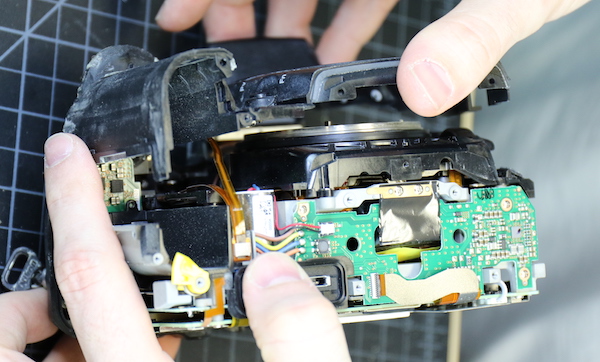
Lensrentals.com, 2016
The front assembly itself and the lower (base plate side) of the front of the camera weren’t horribly dusty, although worse than the back.
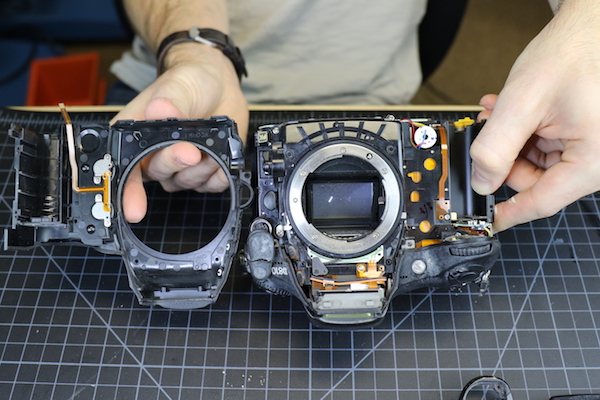
Lensrentals.com, 2016
But the area above the lens mount and under the flash was badly caked with dust. This isn’t surprising since this area is open to the viewfinder, the lens mount, and the flash assembly, so there’re lots of ways for the dust to get in.
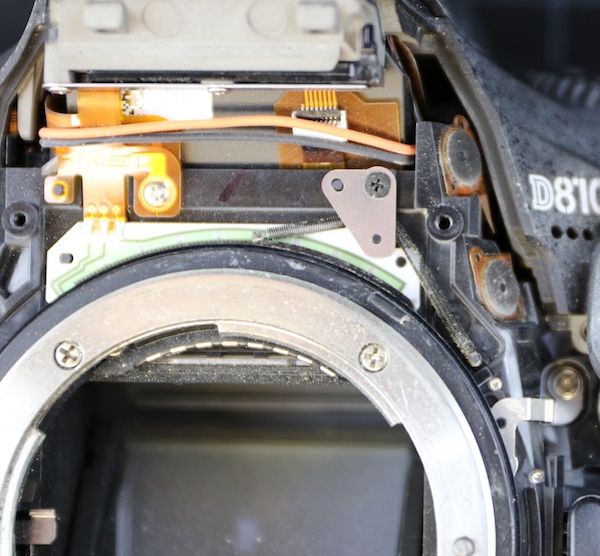
Lensrentals.com, 2016
This is especially a problem because there are lots of mechanicals in here that don’t like dust: springs, mirror, and shutter motor gears, etc.
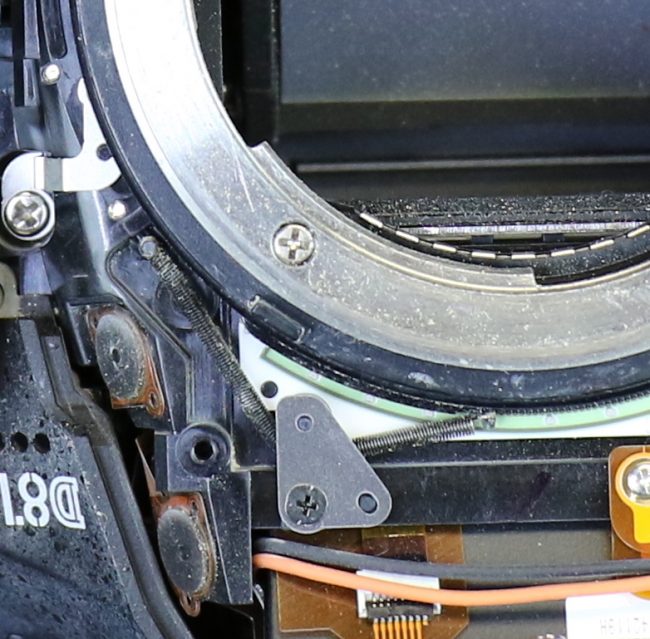
Lensrentals.com, 2016
When we took the top off, the same thing was apparent. Lots of dust got in the top center area and seemed thickest in the parts we didn’t want it in: motors, gears, the optical prism, and electro-mechanical dials and switches.

Lensrentals.com, 2016
One thing we did notice at the top; there wasn’t a lot of dust right around the rubber seals, and the distribution was more even, which makes me think most of this came in from the front panel and around the viewfinder assembly rather than directly through the top seals.
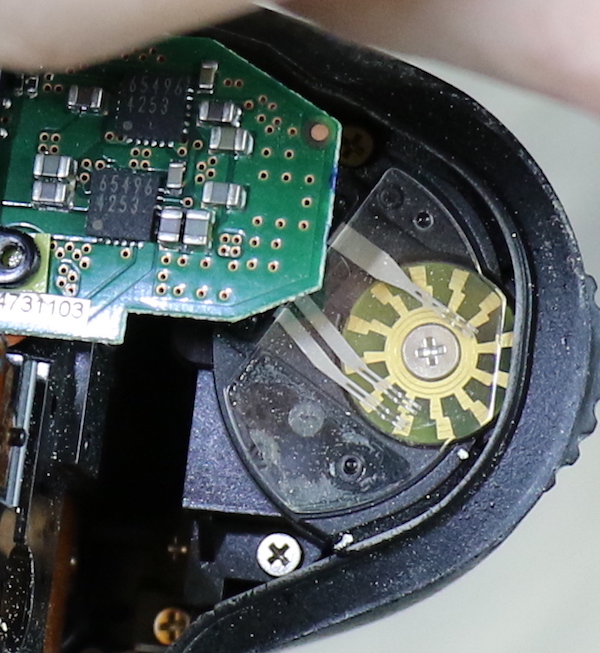
Lensrentals.com, 2016
And Then…
Well, I won’t bore you with 762 eight-by-ten color glossies of what we did there at the Group B bench. But there was much Rocket blowing, many Q-tips were sacrificed, the sensor, AF sensor, and mirror box were wet-and-dry-and-wet-and-dry cleaned. Toothpicks cleaned gears and springs. And much time (about 2 hours) passed. After which everything inside looked shiny clean and new.
Here’s the camera reassembled, but still missing the rubber grips which are more difficult to clean than the insides.
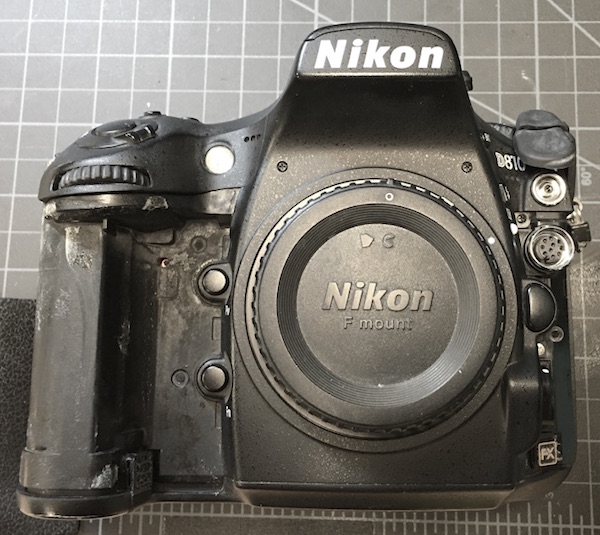
Lensrentals.com, 2016
To give you an idea of how difficult, here’re two pieces as they sit currently. Both have been washed with soap and water. The larger part has also had a vinegar-water wash (that works with alkali dust) and toothbrush scrubbing. We’ll try one a few more things but at this point, I think we may lose this part of the battle and have to replace the rubber. But the camera itself is working fine.
Because someone will ask what we do know, the camera will go into service as a testing camera here for at least a few weeks (probably 8,000 shots) to let any remaining dust work its way into the mirror box and/or viewfinder and get cleaned again.
So now you see part of the reason why I’m so cynical when people tell me their camera was caked with dust and dirt but they cleaned it off, and it’s fine. The outside of this camera could have been cleaned (well, maybe not the rubber grips). But it wouldn’t have for all that long – those dust encased springs, gears, and switches would have started misfunctioning sooner rather than later.
Protect your gear, my friends. Plastic bags, rubber bands, and tape are your friends. Dust, water, and sand are your enemies.
Roger Cicala and Aaron Closz
Lensrentals.com
September, 2016
Author: Roger Cicala
I’m Roger and I am the founder of Lensrentals.com. Hailed as one of the optic nerds here, I enjoy shooting collimated light through 30X microscope objectives in my spare time. When I do take real pictures I like using something different: a Medium format, or Pentax K1, or a Sony RX1R.
-
Michael Clark
-
eXalos
-
ciestas
-
Jaran Gaarder Heggen
